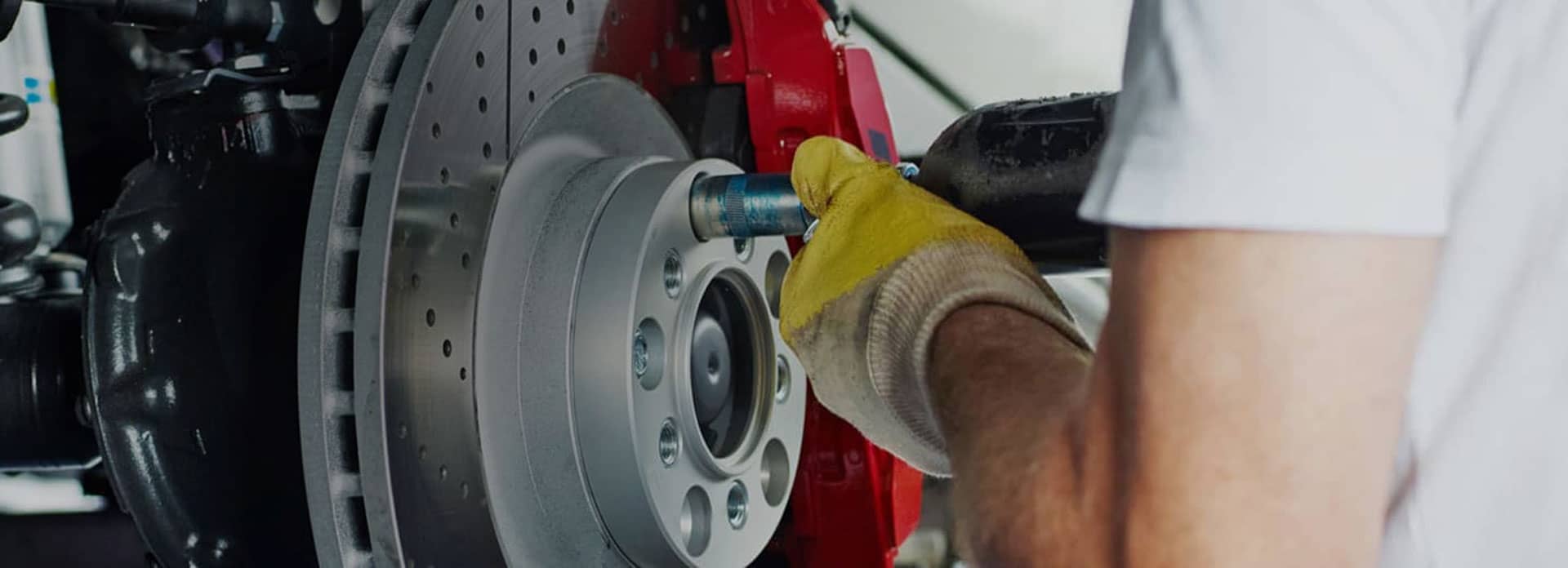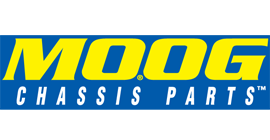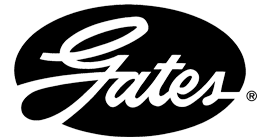
AUTONET TV
Archive for May 2022Beginning to See the Light (Check Engine Light Diagnostics)Posted May 29, 2022 7:18 AMIt's a light many drivers fear they'll see turn on at the most inopportune time. It's the one on the dash that says "Check Engine," "Service Engine Soon," or it may be simply an engine-shaped light. Your first instinct may be to pull off to the side of the road and turn off the engine. The truth is that Check Engine light can be pointing to problems as simple as a loose gas cap. But it could be as serious as a severely misfiring engine. Don't ignore it because it's there to help you avoid an expensive repair it is designed to alert you to, to tell you something's not quite right. Your vehicle has a connected system of computers and sensors constantly checking to see that all systems are working the way they should. If something isn't, the system will turn on the Check Engine light. If it's flashing, that could be serious. Look at some of the other warning lights or gauges such as heat or oil pressure. They could be telling you your vehicle's problem should be checked right away. In that case, if you can, safely pull off the road and shut the vehicle down. If your vehicle loses power and the Check Engine light is on, try not to push the demands you are making on the engine, such as towing or accelerating hard. Simply put, a flashing Check Engine light should be checked out by a professional as soon as possible. If the Check Engine light is on steadily, manufacturers say it means there's a problem, but it probably doesn't require immediate service. The system is designed to remember the problem it found and store it (as a code) so it can be retrieved later. When you do bring your vehicle in to have us see what's behind the Check Engine light coming on, we’ll hook your vehicle up to a diagnostics tool that can reveal the clues the engine's computers have stored. It takes a trained technician to understand those clues, like a doctor who can interpret a patient's symptoms and come up with the correct diagnosis. Some newer vehicles can even be checked remotely. Once we figure out the problem and repair it, you'll be back on the road again. It's nice to know the Check Engine light is your sentry, standing by to alert you the next time you begin to "see the light." TJ's Auto Center Inc. The Part You've Never Seen (Flat Tires and Solutions)Posted May 22, 2022 7:20 AMThey say your vehicle has one, but you've never seen it. And you might not even know it if you stumbled on it accidentally. We're talking about the jack, that tool that allows you to lift one corner of the vehicle up so someone can change a flat tire. So you say you'd never try to change a flat anyway, so you don't care where it is. But one day, you may find yourself in a spot where you're stranded with no cell service and you'll need to at least know the basics of what to do. Well, here's the ironic part. Many of today's vehicles don't even have jacks and spares! Recently, manufacturers have been saving weight by supplying another solution for a flat tire, such as an inflator kit that has a tire sealant in it, or a small compressor. If your vehicle has one of those, it's a good idea to get to know how to use it before you need to use it. Hopefully you'll be able to call roadside assistance and they can take care of things, but circumstances may prevent help from coming for a long time. The next time you're here at TJ's Auto Center Inc. for routine maintenance, ask one of our pros to show you the basics of your vehicle's flat tire tools. Consider watching an online video, too; there are plenty out there and may be specific to your make and model. Some vehicles have a space-saving spare, a smaller one that is meant to get you on the road long enough to find a place to have it repaired or replaced. Those vehicles will also have a jack. Then there are vehicles that have a full-size spare tire and a jack. Again, you may prefer to call roadside assistance, but if no one is available or reachable (which is sometimes the case in a major storm), you may have to fix your own flat. Some drivers do a "dry run" of changing a tire in their driveway during daylight hours so they at least know where the jack and spare are and how to use them. Our service experts may be able to help you locate each part and give you some tips. And again, there are many videos online that can show you the fundamentals of jacking your make and model of vehicle. Nobody relishes a flat tire. You may be lucky and never have to change one. But in this case, a little knowledge is better than no knowledge at all. In the unlikely case you are stranded at the side of a highway at night in the middle of the rain with no cell service, you'll at least be one step ahead.
Mercury Rising (Hot Weather Vehicle Concerns)Posted May 15, 2022 11:29 AMThe heat is on, and your vehicle takes a beating when it is. Several of your vehicle's systems are under extra stress in hot weather, so here are a few to make sure are getting the care and maintenance they need. It makes sense that the cooling system is one to make sure is in top shape. Vehicle breakdowns in summer are often due to a problem with one of the cooling system's components. Coolant levels have to be up to specs, the ratio of coolant to water must be correct and the hoses, pumps, belts and radiator must all be working properly in order to prevent vehicle overheating. Summer is also hard on your air conditioning system. You might find that no air is blowing out of the vents or maybe only hot air is coming out. Air conditioning equipment is best diagnosed and repaired by a trained and experienced technician. The problem could be in any number of components, including the condenser, compressor or blower motor. You may think the battery gets a break in the summer, but heat will shorten the life of your battery more quickly than cold. Your service facility can analyze the condition of your battery and tell you whether it's healthy or needs replacing. Tires take a beating in heat, too. Pavement can be scorching hot, and the sun's rays break down the rubber. Watch inflation pressure in hot weather, too, since air expands the hotter it gets. Your technician can check air pressure, tread depth, cupping and other uneven wear and diagnose the source of any problems. And don't forget brakes. One video online says brakes on a car that were driven hard on a track reached temperatures as high as 500°C/932°F. Heat can reduce stopping power. A technician should periodically inspect pads, rotors, drums, lines and other components to find a problem before you lose the ability to stop. Finally, engine oil is really put to the test when it gets hot. Your vehicle service facility will make sure you have enough oil and the proper kind to keep your engine's components properly lubricated. Help your vehicle beat the heat. TJ's Auto Center Inc. I Want a New Vehicle. Or Do I? (Vehicle Maintenance Payoffs)Posted May 8, 2022 10:23 AMSpring is a peak season for vehicle sales; companies aggressively market new models and offer all sorts of incentives. So you may be tempted to buy a shiny new beauty. But should you? If you've regularly maintained the vehicle you're driving now, you probably don't NEED a new one. Even if your current one needs some repairs, how do those costs compare to what you'd spend on a new vehicle? A brand new vehicle starts to depreciate the second you drive it off the lot. How much? Experts say you'll lose half of its value during the first 5 years of owning a new vehicle. So if you pay $30,000 for a new one, you'll lose $15,000 in 5 years. That's a lot. If you have paid off your current vehicle, think of having to start making car payments again. Let's say your new payment would be $350 a month. Bet you can think of a lot of things you can buy with an extra $350 a month. Many considering a new vehicle don't factor how much their insurance and license tag fees will increase. You may save yourself hundreds of dollars in insurance and license tag fees every year if you keep your old vehicle. That gets us back to the original question. Do you need a new vehicle? Reliability and durability of most models have made dramatic improvements in the last couple of decades. It's not unusual for a vehicle to reliably reach the 200,000 mile/325,000 km mark these days. That's due to new engineering in powertrains, corrosion protection and lubricants. The best bet to keeping a vehicle on the road longer is scheduled, regular maintenance and inspection. Replacing parts before they fail is often cheaper than waiting till they do fail; frequently that prevents a damaging domino effect that affects other systems in the vehicle. Finding a service facility you can trust and developing a relationship with that facility ensures your scheduled service and maintenance will be done correctly, minimizing breakdowns. Sure, at some point you may find you need a big repair that will cost more than your vehicle is worth, or rust will destroy vital components. But it's wise to use reason rather than emotion when you're making any decision about your vehicle, and sticking with your current one could be the most sensible choice.
Slipping into Fall (Driving with ABS Brakes)Posted May 1, 2022 8:21 AMAs the weather changes over from hot to colder, drivers will have to deal with more slippery streets. And it's important to know how to drive with the brakes you have on your vehicle. In the 1970s, anti-lock braking systems (ABS) started to be installed on vehicles and they've been a game changer for drivers. Most modern vehicles have ABS and it's important to know how to drive with them. In older vehicles without ABS, the driver applies the brakes by pushing down the pedal. That, in turn, sends braking pressure to all four wheels at once. But all four tires don't have the same traction because the road surface they're each on isn't exactly the same. ABS allows sensors to determine when particular wheels are slowing down more quickly. The ABS then reduces braking pressure to the wheels that are about to lock up. That way the wheel turns and the tires keep some grip. (You have to have grip to stop.) It's kind of what drivers try to achieve when they pump the older-style brakes without ABS. Another engineered feature of ABS is that it makes sure your front wheels will continue to rotate and maintain some traction. That's important because the front wheels are used to steer, and being able to steer gives a driver more control in a quickly-changing situation. So ABS is all about stopping as fast as the road surface will allow but at the same time enabling the driver to maintain control. ABS is designed for the driver to put steady pressure on the brake pedal and let the vehicle’s computerized system handle the braking. Pumping the pedal in a vehicle with ABS can defeat what the system is trying to do to help you maintain control. Because stopping techniques in a vehicle with ABS are different than those without, it’s important to know which brakes you have so you can operate them accordingly. If you have any doubt, consult your service advisor. ABS involves sophisticated technology and must be maintained in order for it to work properly. Your service advisor can recommend a maintenance schedule for you to follow so your ABS is always on the ready to help you stop when you need to. TJ's Auto Center Inc. | ||
SearchArchiveJune 2010 (71)July 2010 (4) August 2010 (4) September 2010 (4) October 2010 (4) November 2010 (4) December 2010 (4) January 2011 (4) February 2011 (4) March 2011 (4) April 2011 (5) May 2011 (5) June 2011 (4) July 2011 (4) August 2011 (5) September 2011 (4) October 2011 (4) November 2011 (5) December 2011 (4) January 2012 (5) February 2012 (2) March 2012 (5) April 2012 (4) May 2012 (5) June 2012 (4) July 2012 (5) August 2012 (4) September 2012 (4) November 2012 (1) December 2012 (2) March 2013 (1) April 2013 (3) May 2013 (2) October 2013 (5) November 2013 (2) January 2014 (2) February 2014 (3) March 2014 (1) July 2014 (4) August 2014 (7) September 2014 (4) October 2014 (5) November 2014 (4) December 2014 (5) January 2015 (4) February 2015 (4) March 2015 (4) April 2015 (4) May 2015 (3) June 2015 (5) July 2015 (2) September 2015 (2) October 2015 (4) November 2015 (5) December 2015 (2) February 2016 (2) March 2016 (4) April 2016 (4) May 2016 (5) June 2016 (4) July 2016 (5) August 2016 (4) September 2016 (4) October 2016 (5) November 2016 (4) December 2016 (4) January 2017 (5) February 2017 (4) March 2017 (4) April 2017 (3) May 2017 (5) June 2017 (4) July 2017 (5) August 2017 (4) September 2017 (2) October 2017 (5) November 2017 (4) December 2017 (3) January 2018 (5) February 2018 (4) March 2018 (4) April 2018 (4) May 2018 (4) June 2018 (4) July 2018 (5) August 2018 (4) September 2018 (5) October 2018 (3) March 2019 (4) May 2019 (2) June 2019 (5) July 2019 (2) August 2019 (1) September 2019 (4) October 2019 (5) November 2019 (4) December 2019 (5) January 2020 (5) February 2020 (4) March 2020 (5) April 2020 (1) May 2020 (2) July 2020 (1) August 2020 (5) September 2020 (4) October 2020 (4) November 2020 (5) December 2020 (4) January 2021 (6) February 2021 (4) March 2021 (4) April 2021 (4) May 2021 (5) June 2021 (4) July 2021 (4) August 2021 (5) September 2021 (3) October 2021 (5) November 2021 (4) December 2021 (4) January 2022 (6) February 2022 (4) March 2022 (4) April 2022 (4) May 2022 (5) June 2022 (4) July 2022 (5) September 2022 (4) October 2022 (5) November 2022 (4) December 2022 (4) January 2023 (5) February 2023 (4) March 2023 (4) April 2023 (5) May 2023 (4) June 2023 (4) July 2023 (5) August 2023 (4) September 2023 (3) October 2023 (2) January 2024 (1) February 2024 (4) April 2024 (1) May 2024 (3) June 2024 (5) July 2024 (4) August 2024 (4) September 2024 (5) October 2024 (4) November 2024 (4) December 2024 (4) | CategoriesWinter Prep (6)Tire Pressure Monitoring System (1)Shocks and Struts (4)Engine Air Filter (4)Warranty (1)Headlamps (6)Alignment (9)Check Engine Light (5)Maintenance (19)Parts (1)Differential Service (3)Cabin Air Filter (3)Steering (12)Fluids (8)Cooling System (10)Tires and Wheels (6)Tire Rotation and Balancing (4)Drive Train (5)Exhaust (11)Older Vehicles (2)Automotive News (4)Wheel Bearings (2)Fuel System (10)Service Intervals (3)Service Standards (5)Air Conditioning (10)Inspection (5)Battery (13)Brakes (17)Keys to a long lasting vehicle (2)Timing Belt (5)Fuel Economy (8)Transmission (5)Alternator (7)Auto Safety (5)Safety (2)What Customers Should Know (83)Fuel Saving Tip: Slow Down (2)Dashboard (1)Windshield Wipers (3)Oil Change (9)Customer Detective Work (1)Shocks & Struts (3)Safe Driving (1)Water Pump (2)Tires (12)Suspension (2)TPMS (3)Spark Plugs (2)Winter Tires (1)Fuel Pump (1)Brake Service (6)PCV Valve (1)Trip Inspection (2)Transfer Case Service (1)Fuel Filter (1) | |

OUR REVIEWS


Howard L.The business always does a great job and takes care of him. They are very polite.











